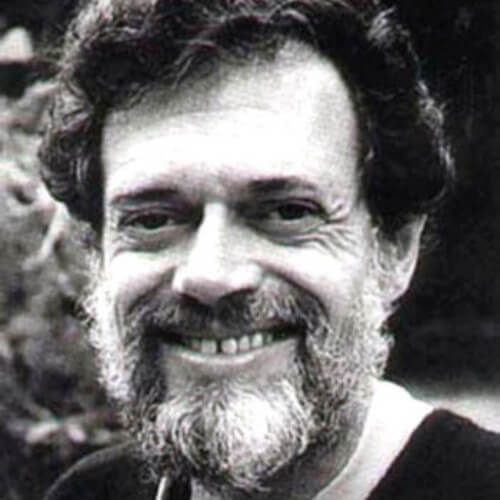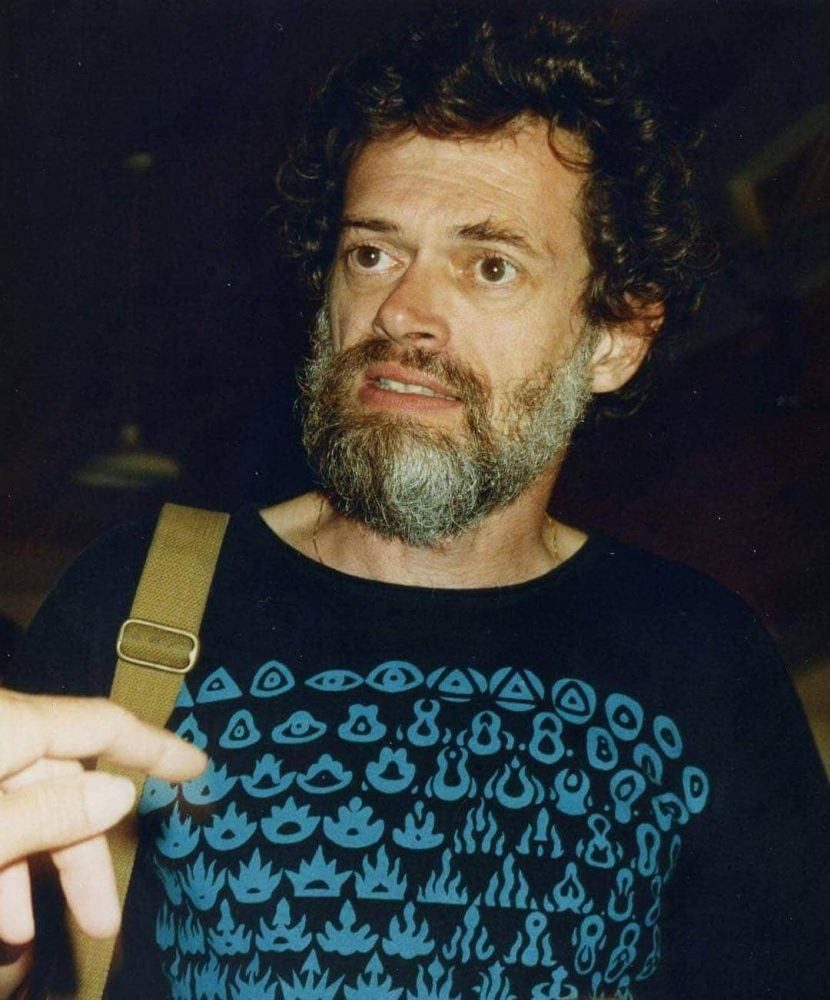
Terence McKenna, an ethnobotanist and philosopher, was a highly influential and controversial figure known for his deep explorations into psychedelic experiences, human consciousness, and the role of psychoactive plants in human evolution. His ideas, particularly those surrounding mycelial networks, were largely speculative and rooted in his visionary experiences rather than conventional scientific methodology. While scientific understanding of mycelial networks has advanced significantly since McKenna’s time, his interpretations offer a unique, if unconventional, lens through which to consider their capabilities and broader implications.
Terence McKenna’s Vision of Mycelial Networks

McKenna famously conceptualized the global mycelial network as “nature’s internet” or “the neurological network of nature.” He posited that the vast, interconnected fungal mycelia permeating the Earth’s soil represent a planetary consciousness, a form of intelligent life operating at a level of complexity far exceeding human understanding.
Key aspects of his view on mycelial networks include:
- Hyper-communication and Information Transfer: McKenna believed that mycelial networks facilitate a form of “hyper-communication” across vast distances and even through time. He suggested that information, perhaps even a collective memory of life on Earth, could be instantly shared and processed through these networks, far exceeding the speed and capacity of human communication systems. This idea often intertwined with his “Stoned Ape theory,” where he speculated that the ingestion of psilocybin mushrooms (which are the fruiting bodies of certain mycelial networks) by early hominids led to a sudden acceleration of consciousness, language, and cultural development due to direct access to this “mycelial mind.”
- Sentience and Intelligence: He attributed a form of sentience or proto-consciousness to the mycelial network, seeing it not just as a biological conduit but as an active, intelligent entity. He often spoke of “the mushroom” as an “informative, divine voice” or “Logos” that could communicate profound truths to those who engaged with it psychedelically.
- Interconnectedness of Life: McKenna emphasized the fundamental role of mycelium in connecting all life on Earth. He saw it as the underlying fabric that links plants, animals, and even different ecosystems, creating a planetary superorganism.
High-Speed Capabilities (McKenna’s Interpretation vs. Scientific View)
McKenna’s Interpretation: McKenna believed in instantaneous, or “hyperlight,” communication within the mycelial network, suggesting a speed of information transfer far beyond any known biological or technological process. This was a metaphysical assertion stemming from his psychedelic experiences and interpretations.
Scientific View: While mycelial networks do exhibit remarkable capabilities, their “speed” of communication is understood differently by science:
- Electrical Signals: Research has shown that mycelial networks can transmit electrical signals, similar to rudimentary nervous systems, in response to stimuli. The speed of these electrical signals is on the order of millimeters per second to centimeters per second, much slower than neural impulses in animals but still a form of rapid internal communication for the fungus.
- Chemical Signaling: Fungi communicate extensively through chemical signals (e.g., hormones, enzymes, nutrient gradients). This chemical communication can lead to coordinated growth, resource allocation, and responses to environmental changes across the network, but it operates at a slower pace than electrical signals.
- Nutrient and Water Transport: Mycelial networks are highly efficient at transporting water and nutrients (like phosphorus and nitrogen) across vast distances within the soil, effectively distributing resources to connected plants in a “wood wide web.” This transport is a physical process, not an instantaneous information transfer.
Functions of Mycelial Networks (McKenna’s Vision vs. Scientific Findings)
McKenna’s Vision: McKenna saw mycelium as a vast, ancient, and wise information network, possibly an alien intelligence, that held the key to human evolution and understanding the cosmos. He believed it offered direct access to collective memory and a higher state of consciousness.
Scientific Functions: Scientists recognize several vital functions of mycelial networks in ecosystems:
- Decomposition and Nutrient Cycling: This is the primary ecological role. Mycelium breaks down dead organic matter (wood, leaves, animal remains), recycling essential nutrients back into the soil, making them available for plants. Without fungi, the planet would be buried under undecomposed biomass.
- Mycorrhizal Symbiosis: Mycelial networks form symbiotic relationships with the roots of over 85% of plants (mycorrhizal fungi). The fungi extend their hyphae far beyond plant roots, increasing the plant’s access to water and nutrients (especially phosphorus and nitrogen). In return, the plants provide the fungi with sugars produced through photosynthesis. This network facilitates resource sharing and communication between plants, sometimes even between different species.
- Soil Structure and Health: Mycelium binds soil particles together, improving soil structure, aeration, and water retention. This reduces erosion and creates a healthier environment for plant growth.
- Pest and Disease Control: Some fungi produce compounds that can suppress plant pathogens or act as biological controls against insect pests.
- Carbon Sequestration: Mycorrhizal fungi play a significant role in carbon cycling. They transfer carbon from plants into the soil, where it can be stored for long periods, contributing to carbon sequestration and mitigating climate change.
Environmental Benefits of Fungal Mycelium (Scientifically Supported)
The environmental benefits of fungal mycelium are profound and well-established:
- Ecosystem Decomposition and Nutrient Cycling: As mentioned, they are the primary decomposers, essential for breaking down organic matter and returning nutrients to the soil, driving the biogeochemical cycles of carbon, nitrogen, and phosphorus.
- Soil Formation and Health: Mycelium creates stable soil aggregates, improving soil structure, water infiltration, and aeration. This is crucial for healthy plant growth and preventing soil degradation.
- Support for Plant Life (Mycorrhizal Networks): They are vital for the health and survival of most terrestrial plants, enhancing nutrient uptake and water absorption. This is especially critical in nutrient-poor environments.
- Carbon Sequestration: Mycorrhizal networks transfer significant amounts of carbon from plants into the soil, where it can be stored, playing a crucial role in regulating atmospheric CO2 levels.
- Bioremediation: Certain fungal species, particularly white rot fungi, have the remarkable ability to break down a wide range of pollutants, including plastics, petroleum hydrocarbons, pesticides, heavy metals, and even some radioactive waste. This process, known as mycoremediation, offers a sustainable solution for environmental clean-up.
- Habitat Creation and Biodiversity: Fungi themselves provide food and habitat for a vast array of organisms, contributing significantly to biodiversity.
Conclusion on McKenna’s Findings and Scientific Understanding
Terence McKenna’s ideas about mycelial networks were visionary and deeply influential, particularly within counter-cultural and psychedelic communities. He popularized the concept of fungi as an intelligent, interconnected planetary network long before mainstream science fully appreciated their complexity. His emphasis on “hyper-communication” and consciousness within these networks, while lacking direct scientific validation, speaks to a metaphorical truth about the profound interconnectedness and informational exchange within natural systems.
From a scientific standpoint, while mycelial networks don’t communicate at “hyperlight speeds” in the way McKenna imagined, their electrical and chemical signaling, along with their physical transport mechanisms, do constitute a sophisticated biological communication system. Their role in decomposition, nutrient cycling, supporting plant life, improving soil health, sequestering carbon, and bioremediation makes them undeniably critical for Earth’s ecosystems and our planet’s health.
McKenna’s contribution lies not in precise scientific predictions, but in inspiring a deeper, more mystical appreciation for the unseen intelligence and interconnectedness of nature, prompting many to look at fungi not just as simple organisms but as fundamental architects of life on Earth. His “findings” were more akin to philosophical insights derived from altered states of consciousness, serving to highlight aspects of natural systems that science is only now beginning to fully understand and appreciate in its own empirical way.
Discover more from Virtual Identity
Subscribe to get the latest posts sent to your email.
